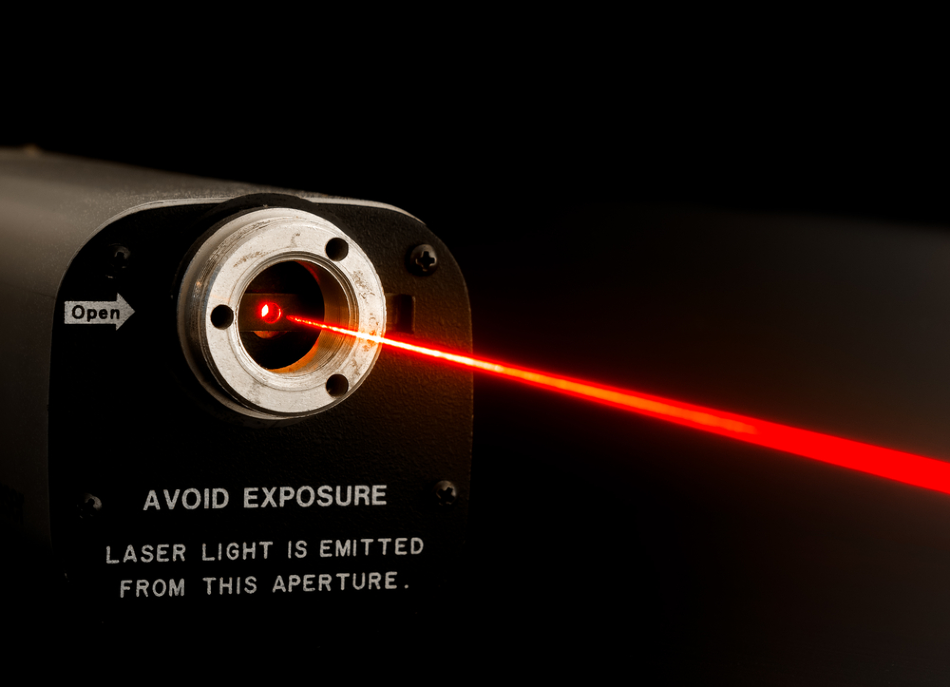
Image Credit: Doug McLean/Shutterstock.com
Nanomachines constructed of novel ‘optical matter’ could use laser light to perform tasks on the nanoscale, suggests new research.
Researchers from the University of Chicago have created a nanomachine that can convert laser light into work. The optically powered machine self-assembles and could have applications in the study and manipulation of fluids within nanostructures, as well as particle sorting on a tiny scale.
The team, led by Norbert F. Scherer from the University of Chicago, believes that its new nanomachine aims at a long-standing target in nanoscience and photonics, namely creating self-assembling nanoscale machines that can operate in ‘ordinary’ conditions and environments — such as in liquids at room temperatures.
The team’s research is published in the latest edition of the journal Optica — The Optical Society’s (OSA) high-impact research publication.
The machine devised by Scherer and his colleagues operates based on a material known as ‘optical matter’ — metal nanoparticles bound together by light rather than chemical bonds, as found in ‘ordinary’ matter.
This optical matter is contained in a solution to which laser-light is introduced. This kick-starts the assembly process, which then proceeds autonomously. Extra adaptability arises from the fact that the user does not need to control the process. They can use laser light to manipulate the system further and tailor the nanomachines for specific applications.
This results in a unique machine that takes the energy for assembly and the operating power that makes it work, from light. Nevertheless, this dependence on light means the first step in creating such a nanomachine hinges on optical matter creation.
Making Light Work: How to Create Optical Matter
Optical matter is created by a similar process to ‘optical trapping’, where light is used to hold and manipulate particles. Rather than using the biological molecules employed in optical trapping, a laser light field creates interactions between metal nanoparticles in optical matter. The nanoparticles are smaller than the light's wavelengths and are forced to assemble into ordered arrays.
Previous studies in nanomaterials and photonics have revealed that, when optical matter is exposed to circularly polarized light, it rotates as a rigid body in a direction that opposes the polarization. This negative torque effect inspired the researchers to consider a nanomachine built using an assembly and operating principle.
The team assembled the optical matter in an analogous way to interlocking gears within a ‘traditional’ machine. When one optical matter ‘gear’ is turned, it drives an interlocking gear in the opposite direction.
The circularly polarized light acts as a larger gear to the nanoparticle array, converting it into either orbital or angular momentum that turns the array in the opposite direction. This, in turn, drives a proximate ‘probe particle’ which orbits the array—allowing the system to manipulate particles in its surroundings.
Click here to find out more about lasers on the market today
Making a More Efficient Optical Machine
The team of researchers created a pair of nanomachines based on the principles described above. The nano-devices consisting of silver nanoparticles — 150 nm in diameter — in a simple water solution were optimized to utilize laser light with a 600 nm wavelength.
The difference between these two nanoparticle machines was the number of optical matter gears they consisted of. The team discovered that this difference went far beyond the cosmetic, with their research demonstrating that the eight-gear nanomachine functioned more efficiently than its seven-geared counterpart.
This led the scientists to conclude that optical matter-based nanomachines function better when composed of more particles. This is probably because more gears transfer more power to the probe.
Increasing the number of particles — or gears — within such a machine is one of the major focuses of the team’s future research. But, as well as concentrating on the machine size, the researchers will experiment with its composition, material testing components other than silver nanoparticles.
Future studies could also see attempts to increase such machines' complexity by creating patterned gears and strategies to immobilize nanoparticles. The team believes these steps could result in increased specificity for tasks such nano-devices can perform.
Ultimately, the researchers involved in this study believe that the nanomachines they have developed and demonstrated could, with some refinement, prove to be extremely useful in the fields of nanofluidics and particle sorting.
References and Further Reading
Parker. J., Peterson. C. W., Yifat. Y., et al. (2020) An Optical Matter Machine: Angular Momentum Conversion by Collective Modes in Optically Bound Nanoparticle Arrays. Optica, DOI: https://doi.org/10.1364/OPTICA.396147
Disclaimer: The views expressed here are those of the author expressed in their private capacity and do not necessarily represent the views of AZoM.com Limited T/A AZoNetwork the owner and operator of this website. This disclaimer forms part of the Terms and conditions of use of this website.